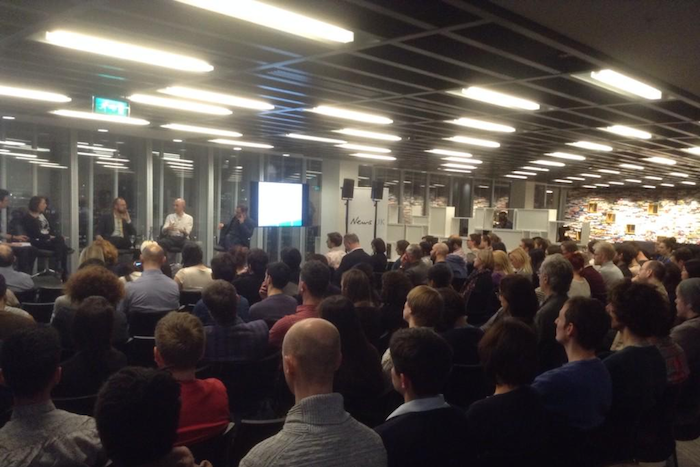UXPA – The State of UX
Last Thursday (19th April) I took part in a UXPA event about the state of User Experience (UX). I was joined on a panel by others representing different areas of industry – private business (Michael Lock - Experian), public Agency (Daniel Harris - Fjord) and Startup (Anna Dahlström – byflock).

I’ve spent much of the last 6 months hiring and working with designers at the Department for Work and Pensions. Event organiser Giles Colborne had asked us all to share some of our experiences of hiring and working with the UX design community. He also told us he was ready for strong opinions.
To prepare for the event I spent some time writing down my thoughts from my experiences so far. I thought it would be to good share these here as well. In the end I only covered some of these points as the conversation moved more from the state of UX to the future of UX.
The points I made about ‘soft skills’ and the potential for people to focus more on specialisms within teams seemed to resonate with the audience. We also ended up talking about UX career progression. This wasn’t something I’d thought about as much before the discussion – I definitely see product or service manager roles as a natural progression for people in the UX community. Who better to help put empathy at the centre of delivery?
How we think about User Experience
In a government design team, UX or user-centred design is about how well things work for people when we deliver services.
We don’t see UX as a job role. It’s not something that’s the job of a single person.
The experience users have is the result of decisions made by an entire team. This includes areas like policy and security, right through to product or service managers.
Design is the process we use to make sure our products and services meet the needs that exist in the context of people’s lives. It’s not about making a transaction with government more engaging.
The real user experience is the outcome. This might be financial support while people are working age or access to their pension when they’ve retired.
What we’re looking for from the User Experience community
Most of our contract or permanent recruitment is for specialist roles such as Interaction Designers and User Researchers.
Interaction Designers focus on the individual interactions users have throughout a user journey or an entire service. User Researchers work closely alongside them to test these products and services we’re designing with real users.
We’re also starting to hire Content Designers and Service Designers – both relevant skill sets to people within the User Experience design community.
We’re looking for makers. Technical skills are important but not always essential. As a design team we try to get to working in code as quickly as possible. I don’t mind how designers work as long as they can find ways to test their ideas and concepts with real users – a paper prototype can be as valid as a HTML prototype.
We already have ways of working established within our teams. For example, how we prototype.
Where hiring UX contractors has worked less well is when we’ve brought in people too dependent on putting in place their own methods and process. It’s easy to overcomplicate any research and design process. The end product can suffer and so do the people that need to use the service.
When looking at examples of UX/design work I’m most interested in the final product. What got done. The measure of success is an end product or service that meets a set of clearly understood user needs.
How the role of UX has changed
We’re looking for UX specialists who can work collaboratively. The traditional role of a UX designer is too broad. Instead we need specialists to help teams deliver the best possible solutions to meet user needs.
For designers this means helping their team to solve design problems – generating ideas or ideation through sketching, or helping prioritise changes that deal with the complexity of the policy underlying a service.
For researchers their job is to help the entire team learn about users so they make better, more informed decisions about what to design or deliver.
We don’t want people who can only work on their own. We’re looking for specialists who are comfortable letting others contribute encouraging frequent collaboration – this means they’ll need to understand and work across specialist disciplines.
Most of all we’re looking for people who care. The best UX or design specialists I’ve worked with are the people willing to do the hard work to get things done – to make things simple.
We’re looking for people with “skin in the gameâ€. In my experience, the very best people are willing to invest themselves into what they’re working on. They invest their energy as well as their billable hours. This is more than just “passionâ€. You need this if you want to get the hard stuff done.
This is my blog where I’ve been writing for 18 years. You can follow all of my posts by subscribing to this RSS feed. You can also find me on Bluesky, less frequently now on X (formally Twitter), and on LinkedIn.